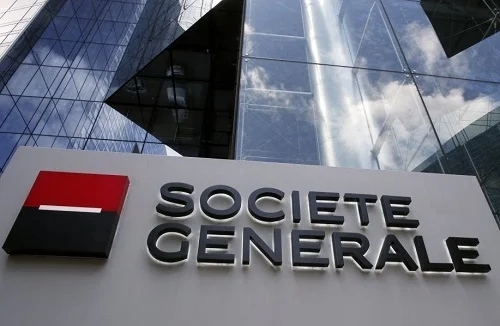
By Sarbjit Panesar, global head of business development, asset managers at Societe Generale Securities Services
Sarbjit Panesar, global head of business development, asset managers at Societe Generale Securities Services (SGSS) discusses the digitalisation legacy of Covid-19, how change management is a vital piece of technology adoption and what challenges are thrown up by the rapid shift to ESG funds.
How has Covid driven digitalisation and what will be its legacy?
Digitalisation was a process that was well established already but the strictures imposed by the Covid pandemic have accelerated it considerably. Across the fund management industry from the investment process, through client engagement to the practicalities of end investors making purchases, the speed of adoption has dramatically increased since March. From e-signatures to home-based traders and the expansion of web portals to buy funds, all elements of digitalisation have taken a large and sudden step forward.
Now that the speed of change has increased, I don’t think it will slow. You can’t put the genie back in the bottle: boards have seen that many of the processes they thought could not be digitalised, such as signatures, work adequately, and in many cases better, than their manual predecessors.
Secondly, the full cost savings associated with digitalisation will only come when processes are completely digitised. With the race now half run, and large amounts of money spent, management will be impatient to get to the finishing line to harvest these financial savings. The pace of change will slow eventually when these benefits start being released: I don’t expect it this to happen for at least 18 months.
What has this greater speed meant for outsourcing choices by fund managers?
This rapid process of digitalisation has increased scrutiny on the quality of services from external firms, and the level of co-operation and engagement that is required to make such partnerships succeed. In ten years, fund managers have gone from a stranglehold on their IT systems – building and running their networks, using their own code and so on – to the possibility of full middle and middle and back office outsourcing. In the same way the coming years will see a similar road travelled, albeit at a faster speed, for other functions.
Fund managers are getting smarter about what parts of the business they should outsource. They have learned the benefits of modularity: it is easier and safer to outsource small chunks of an operation. While fund administration or accounting lift outs have become relatively straightforward, far more commitment is required from both parties when it comes to middle and back office outsourcing.
The process is neither cheap nor easy, and the prospect has raised key questions about what is at stake. An outsourcing relationship can see the heart and lungs of a company moved from internal to external control. A lot can go wrong: unsuccessful outsourcing processes lead at best to severe limits on future growth and at worst can destroy an organisation.
Choosing the right partner is not just a question of functionality; it means buying into the ethos of the organisation. Fund management companies are looking for a partner that can deliver the wider change agenda alongside the technology piece.
Can you illustrate why change management is integral to the adoption of new technology?
It is often a challenge to persuade stakeholders that the benefits of increased speed provided by automating a process do not mean losses in terms of quality.
One example is our Factsheet service that uses Artificial Intelligence (AI) to generate sections of fund commentary. It can produce a first version of investment performance commentaries by generating simple sentences attributing the wider performance of the fund to its component holdings (as well as other factors), using basic return data.
Sometimes we have found managers are initially sceptical of the benefits, believing that this is an area requiring their skill and insight – that the AI will therefore not be able to do the job as well as them. Certainly, this is true for that section of investment reports that contain genuine insight – the forward looking material that typically follows the past performance commentary. But there is plenty of generic spadework that comprises the first few lines of a fact sheet where a manager’s time can be saved.
Once the fund manager can see how the AI is taking out the generic tasks, leaving him or her to concentration on the insight tasks, the advantages become clear. Some of these firms have thousands of fund fact sheets to generate per month.
The process is not unlike the conversations we had around reconciliation tools in the past. Before digitisation, back-office professional might spend 90 per cent of their time on matching values that agree and only 10 per cent on resolving those that don’t. Automated tools mean that this is the other way round: they now spend 90 per cent of their time resolving issues and 10 per cent overseeing the process of matching.
How has this year’s volatility changed what clients are asking of you?
The market volatility of this year has seen growing number of funds with multiple share classes asking for hedges on those share classes to be executed as close as possible to the valuation point of the underlying fund.
As has happened in the past, this year’s increased volatility has seen growing divergence between the core fund return and share class return, where the time of day of hedge execution and of fund valuation differ. If my local share class is 3% down on the core strategy, as an investor I will question the value of the share class. Should I be buying the underlying fund and hedging the FX risk myself?
So, we have had several requests for hedging solutions that can flex around agreed timed executions, thereby matching as closely as possible the core fund valuation times (4pm in many cases).
These types of requests have cropped up following volatility periods in the past. What’s different this time is the engagement of regulators. Both local and pan-European regulators have prioritized the interests of end investors in recent years, meaning increased scrutiny on how funds are described and whether they are providing investors with value for money. So we expect to see sustained pressure for change here rather than the issue dropping of the radar as volatility recedes.
How far can technology accelerate the adoption of ESG practices?
Among various demonstrations of the speed with which the industry is embracing ESG comes with the news that MIFID 2 effectively directs wealth managers to offer ESG share classes in all funds. This means that European fund manufacturers will have to respond in order to be on the platforms or lists of private banks.
The big problem the industry faces currently is one of harmonization of measuring standards. Currently there are a number of competing agencies and organisations providing data for managers’ ESG models, with other managers building them on their own. There is considerable divergence between measuring and scoring systems.
The situation is not unlike that faced by credit rating agencies early in the development of that industry. Over the years the movement of senior staff between rating agencies cross-pollinated best practices and a process of convergence and harmonisation took place. Today an added spur to industry efforts will be provided by regulators and governments.
The industry is moving fast but still has a long way to go. Many investors expressed concern at ESG rating systems following publicity around fast-fashion retailer Boohoo. Thanks in part to a high rating from MSCI, many ESG funds were holding the stock when it was hit with allegations about poor working practices in factories that make its clothes.
What role do governments or regulators have to play in ESG standardisation?
As with auditors, ESG rating agents will on occasion miss things or make mistakes. Despite the strong momentum generated by investors, the path to compliance will not be a straightforward one and there is a central role for government to play to drive standardisation.
Here, national governments have already taken large strides, focusing on different parts of the puzzle. In France the emphasis has been on environmental credentials, with every company obliged to publish a detailed account of its carbon footprint and energy use. The UK has focused, in part through the Investment Association and through work by the FCA, on governance. In Germany, there is a heavy emphasis on the social dimension.
Fund managers are now diversifying their ESG strategies and how they implement them; where the industry moves will shape what intervention is needed. For example, whereas traditionally the norm was to divest from or avoid companies that performed poorly on ESG measures, many funds today are taking an activist approach deliberately targeting poor performing stocks to drive change.
How can your experience help clients build up their ESG offerings?
Our experience in France and Germany is particularly useful here. Here we have typically been providing multi-managers’ portfolios with an integrated resource through which to collate information and provide a single ESG score. For single fund managers, similarly, we have offered an ESG picture of the portfolio at both pre and post trade. Our SGI indices group, meanwhile, which manufactures ESG compliant benchmarks on a no-name basis for a number of managers, is another important resource. Finally, the skills from various ESG advisory committees that we employ across the organisation can be drawn on.


